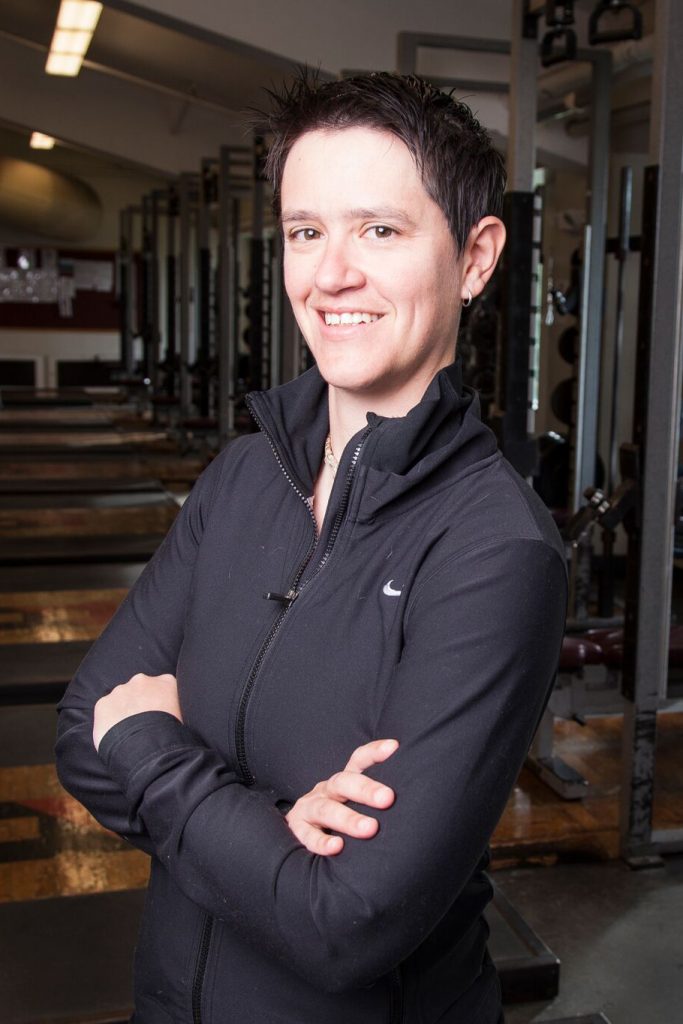Today’s guest post comes courtesy of good friend, colleague, and past contributor to this site, Kim Lloyd.
If you’re a coach/personal trainer you’ve likely experienced what Kim describes below…
…being “fired” by a client.
It never feels good. But did you take it as an opportunity to reflect, learn, and grow or to just shrug off, turn the page, and repeat the same mistakes?

Failures Hurt. Here’s What I Learned From One
A funny thing happened on my way to losing an online training client.
By funny, I mean I rocked in a corner for two days eye-opening.
Regardless of the industry in which you work, failures hurt.
This client was an acquaintance I’d met when I lived in Boston, and after following my blog for a few years, she decided that she wanted to ditch Zumba (not that there’s anything wrong with Zumba) and start strength training.
Win.
We hopped on a phone call, got down to the nitty gritty, and after talking through her goals, injury history and why Bob Dylan’s Blood on the Tracks is one of the best vinyl records ever, I set her up with a program and off we went.
Except…well…we didn’t.
After a few weeks, she very kindly sent me the break-up email that no one likes to get. It’s not you, it’s me, I just need more space, Keene shoes are not a fashion statement…
Ultimately, she was too overwhelmed to even start the program, and she was headed back to Zumba (again, not that there’s anything wrong with Zumba).
But in the breakup email, she very graciously offered me a breakdown of all of the challenges she had in trying the program I’d written.
Her reaction to the cable machine was perhaps the most telling:
“I have never used the cable pull-down thing. That’s in the boy-area, and one feels one should be carrying a gallon container of blue liquid to even be admitted. How will I approach it? How do I change the weight? How long can I stay on it? I will completely break into the boy area, of course, I don’t care, but it’s somewhat intimidating unless someone shows you first.”
I was disappointed to lose a client, sure. But once I got over myself, I also came face-to-face with all of the nuances about strength training that I take for granted.
I forgot what it felt like when I first started to train seriously.
What it felt like to walk into the free weight room (not the Nautilus room), with a bunch of dudes who were all getting after it and panic about where I should put my gym bag and do my warm up and why is that man in the corner wearing a pro wrestling costume? (This really happened.)
I forgot what it felt like when I couldn’t get the bar off of my chest that one time in the weight room when I was 24. What it was like when I couldn’t press 15lbs for more than three reps during a softball practice when I was 15.
I forgot how long it took me to grasp how to read and understand a program. Sets, reps, tempo and wtf is a Pallof Press? And a Landmine? And what do I do if my gym doesn’t have one?
When it comes to strength training, I live in a bubble and this client reminded how difficult it is for many people to get over the humps that I got over so many years ago. Worst of all, I forget that there are those humps.
I try to give people a roadmap, but sometimes forget that they don’t know how to drive the car.
What I want most is for people to fall in love with strength training the way I fell in love with it.
Because it’s good for them.
As a coach, I think the worst thing that can happen is for someone to be interested in the idea of strength training, to be bought in to trying it out, only to feel so intimidated, defeated and frustrated by the process that they quit before ever getting started.
My client’s break-up email reminded me of the people out there, especially women, who are trying to figure out what good information is in a world full of Insta-trainers and infomercials.
Who are battling old feelings of inadequacy every time they set foot in a gym environment because 7th grade gym class experiences are never as far away in our brains as we think they are.
I’m grateful to this client for so many reasons – but perhaps most of all for reminding me as a coach that I have to help clients understand how to drive before I send them on their way.
Cue This Is Why I Wrote a Book Portion of the Article
Believe me when I say this: I feel a bit timid being all like “and that’s why I wrote a book,” even though the truth of the matter is…
…that that’s exactly why I wrote a book.
I did so not to self-aggrandize1, but to legitimately help people (particularly women) that are too intimidated to ask for help, much less step foot in the weight room.
I wanted to show them that they CAN, but in a way that meets them where they are.
Note From TG: It’s a fantastic guide and I HIGHLY recommend it to anyone interested in learning in’s & out’s of lifting weights in a safe, efficient, and results driven manner. Kim is a phenomenal coach.
Start Where You Are: A Beginner’s Guide to Lifting Weights and Feeling Great

About the Author
After spending her first two decades out of college working 29 different jobs (English major for the win), Kim Lloyd settled into a career in fitness and is an ACE Certified Personal Trainer as well as an Online Certified Trainer. She coaches full-time at Spurling Fitness in Kennebunk, Maine and trains online clients through Kim Lloyd Fitness.
You can find Kim and her plethora of inflatable costume videos HERE.









